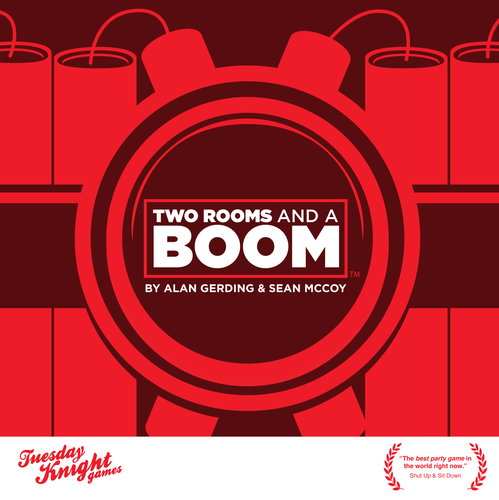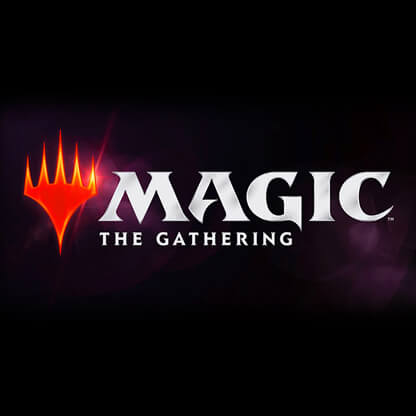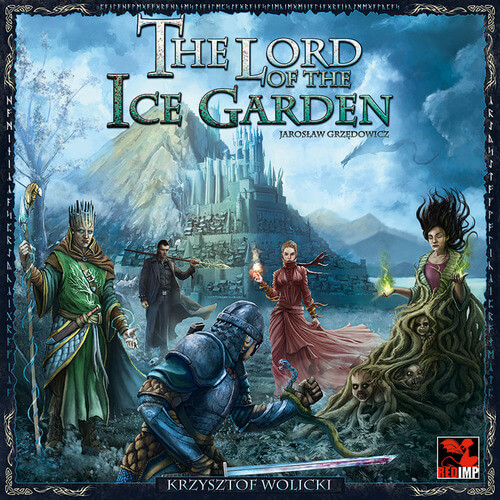
Two Rooms and a Boom
In Two Rooms and a Boom, a dynamic game of social interaction, players are divided into two teams: the red team and the blue team. The blue team has a President, while the red team has a member carrying a bomb. The participants are dispersed in two different environments, where their identities remain secret. The game takes place over five rounds of time-limited discussions, allowing the players to try to discover each other's identities and form alliances. At the end of each round, some players are swapped between rooms. The objective is strategic: if the red team's bomb finds the blue team's President at the end of the time limit, the red team prevails; if not, victory goes to the blue team.Artists: ;
Designers: Alan Gerding; Sean McCoy
Date: 2013
Note: 6.6
Mechanics: Acting/Mime, Players with Different Skills, Team play, Timed Start, Voting
Topics: Police
Table of Contents
- How to Play
- Tips for playing
- Game mechanics
- Game components
- Additional Information
OBJECTIVE OF THE GAME
Tips for playing
Here are some tips for doing better in the game Two Rooms and a Boom:
- Maintain fast and effective communication between the two rooms to plan strategies quickly.
- When you change rooms, take the opportunity to get subtle information about who is in which team.
- Develop secret signals or codes to communicate with your team without generating suspicion.
- If you're the leader, observe the players' behavior to identify allies and enemies.
- As president, avoid revealing your identity early on, but find out who's on your team.
- The doctors must desperately try to save the president, while being discreet about their true objectives.
- Spread false information strategically to confuse the opposing team.
- Be wary of attempts to negotiate between rooms, they can be traps.
- Time is crucial; keep an eye on the passing minutes to avoid surprises at the last second.
- Consider using less suspicious players or those with less prominent roles as information scouts.
Video about the game
GAME mechanics
- Players with Different Skills: In Two Rooms and a Boom, each player receives a character card that defines their specific abilities and objectives. In addition to the main characters, such as the President and the Bomber, there are several others with unique abilities that can influence the game in different ways, such as altering the information available or impacting the teams' strategy.
- Team play: Players are divided into two teams: the Blue team, whose main objective is to protect the President, and the Red team, which aims to blow up the Bomber in the same room as the President at the end of the game. Collaboration within the teams is essential, as players must work together to identify members and fulfill their objectives despite being in separate rooms.
- Vote: In each round, both rooms vote to elect a Leader. The Leader has the power to choose players to switch rooms at the end of the round, a crucial element that determines whether players can maintain or change the status quo, as well as influencing each team's ability to complete their objectives.
- Acting/Mime: During the game, communication is limited and players often have to be creative to pass on information without explicitly revealing their cards, using mimicry or acting to give hints about their true identities or abilities without directly compromising their intentions.
- Timed start: The game consists of a fixed number of rounds, each with a limited amount of time. The first rounds are longer and allow for more information exchange, while the final rounds accelerate decision-making, increasing tension and urgency as the game approaches its explosive climax. Time management is crucial, as teams need to optimize communication and room exchanges within the time available.
Game components
See all the items in the game below Two Rooms and a Boom:
- Character cards
- Reliable
- Explosives
- Leadership Letter
- Discussion Shifts
- Red Room
- Blue Room
- Mission letters
Additional Information
- Ludopedia link: https://ludopedia.com.br/jogo/two-rooms-and-a-boom
- Link Tabletopia:
- Amazon Brazil link: Comprar Two Rooms and a Boom
- Amazon USA link: Comprar Two Rooms and a Boom


